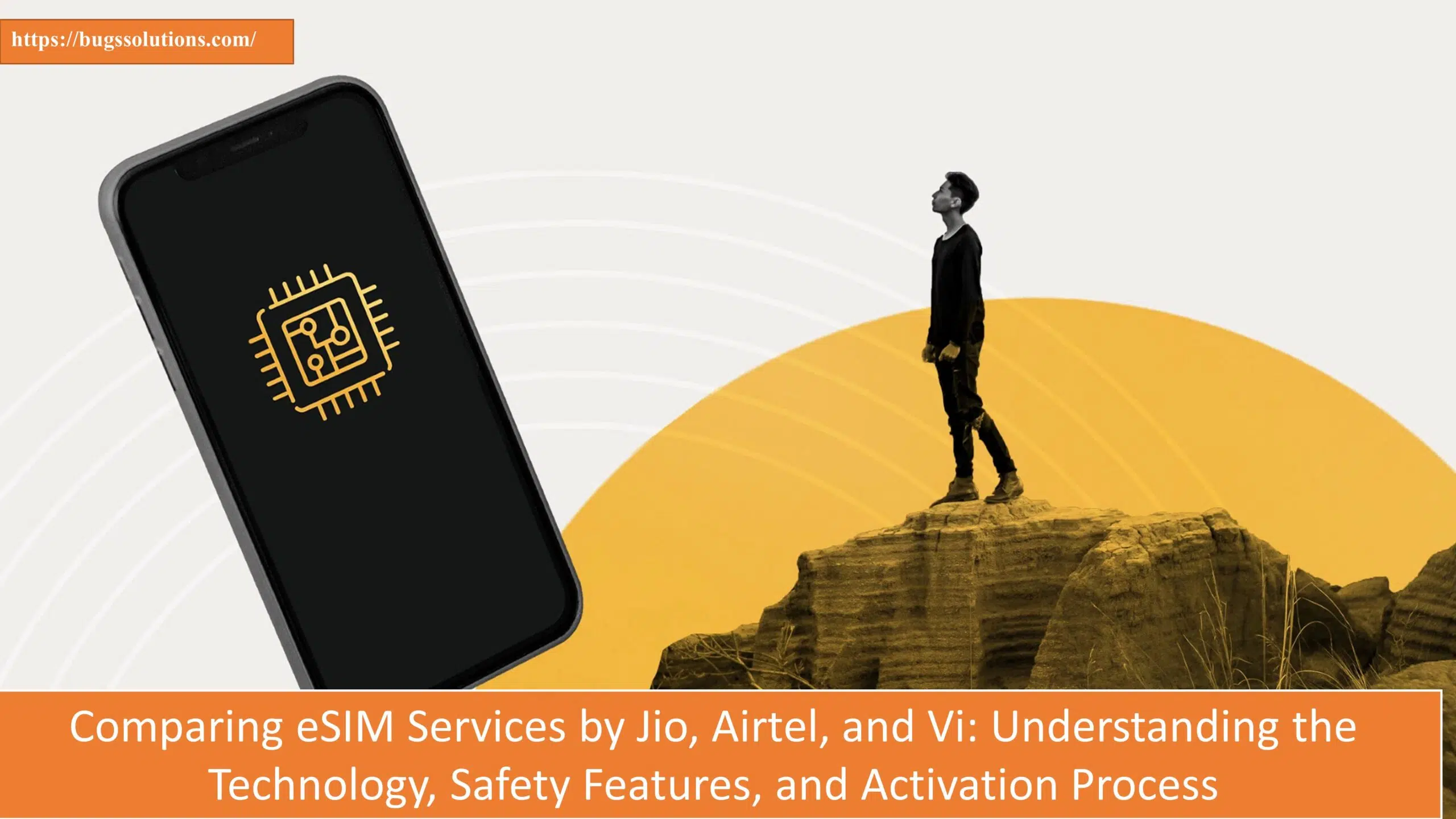The Integrated Customer Identity Module, or eSIM, is one such innovation that has gained importance in recent years. Technology has continuously changed the face of telecommunications. This ground-breaking technology replaces conventional physical SIM cards, offering a number of advantages and completely changing how we connect to mobile networks.
A device can go without a physical SIM card by using an embedded SIM card, or eSIM. In contrast to standard SIM cards that are removable and interchangeable, an embedded SIM (eSIM) is inserted into the device at the time of production.
An eSIM works in a similar manner as a conventional SIM card. It keeps data necessary for network identification and authentication. However, a chip integrated within the gadget stores this data electronically rather than on a physical card. This makes it possible to provision and manage mobile service remotely.
What is eSIM?
Embedded SIM, or “eSIM,” is a technique that embeds a SIM card right into a device’s motherboard. eSIMs do deal with the necessity for an additional SIM card slot, in contrast to actual nano-SIM cards. Users can activate a cellular plan from their carrier using an embedded or digital SIM without needing a conventional SIM card. In India, Bharti Airtel, Jio, and Vi are the top suppliers of eSIM support for smartphones, offering services to users of Android and iOS.
The Advantages of eSIM Technology
Flexibility: Those who travel frequently can transfer providers without having to replace their physical SIM cards.
Space Efficiency: The lack of actual cards makes it possible to construct smaller devices, which is essential for IoT and thin smartphone designs.
Remote Provisioning: This improves user convenience by enabling remote activation and maintenance of mobile subscriptions.
Better Security: With extra security features like remote deactivation for increased safety, eSIMs lessen the possibility of physical tampering and theft.
eSIM disadvantage
Limited Device Compatibility: The limited compatibility of eSIM technology prevents its widespread adoption.
Dependency on Service Providers: If a user’s preferred carrier does not support eSIM or if there are problems with the activation procedure, they might face difficulties.
Complexity of Initial Setup: Compared to regular SIM cards, activating an eSIM can involve a number of procedures and possible compatibility problems.
Absence of common Standardization: Device and carrier incompatibilities may arise from the lack of a common standard for eSIM, causing a disjointed user experience.
How to enable eSim on Jio, Airtel and Vi
Although setting up an eSIM is simple, the exact procedures differ according on your mobile provider. You won’t pay for the process, and the eSIM will receive your current mobile plan. While Vi exclusively offers eSIM support for postpaid plans, Airtel and Jio support eSIM for both prepaid and postpaid contracts.
Use the procedures listed below for your specific carrier to activate your eSIM:
- Vi Activation Instructions: Text your “eSIM registered email ID” to 199.
- Airtel: Send an SMS containing “eSIM registered email ID” to 121
- Jio Activation: Text “GETESIM” to 199 to initiate the service.
Next step:
- Locate your EID and IMEI: Check the Settings app on your phone for these numbers.
- Wait for the SMS: You will receive additional instructions from your carrier through an SMS.
- Verify Your Email: Your email will receive a QR code. Verify the accuracy of your email address.
- Check or Update Email: To check or make changes to your email, use the carrier’s app (MyJio, Vi, or Airtel Thanks).
Different smartphones follow different processes while scanning QR codes:
— Samsung eSim: To add a mobile plan, select Add Using QR Code under Settings > Connections > SIM Card Manager.
— To add a data plan for eSim on Apple, navigate to Settings > Mobile Data.
— eSim running on Pixel Select Network & Internet > Settings > Mobile Network >. Instead, download a SIM card. Select Next >. Scan the QR code that your email sent you.










